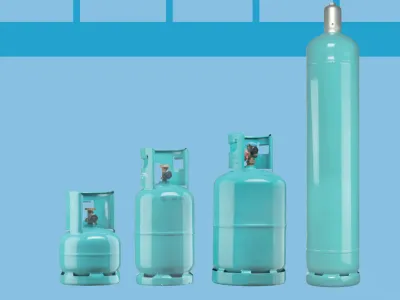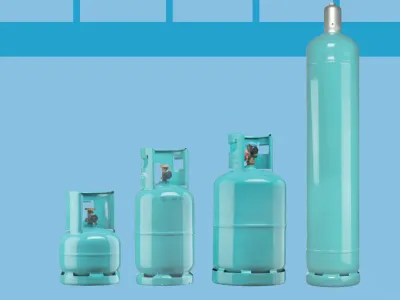Refrigerant R22 - How was the exit?
Refrigerant
Refrigerant R22 - How was the exit?
In the early 1980s, the international debate on the elimination of HCFCs and CFC refrigerants began, and with it the search for alternatives. It was decided to gradually reduce the use of these refrigerants by 2040 and then ban them altogether.
R22 was explicitly part of this solution. In the US, the use of R22 even increased thereafter, as the
Contents
Product Ad
Image

So-called low GWP refrigerants were and are being developed as environmentally friendly and climate-friendly refrigerant variants.
Jobs
Mounting
Mechanic/Welder (m/f/d) at GEA
We are looking for three mechanics/welders (m/f/d) at our Berlin location.
Image

GEA Refrigeration Germany GmbH
Berlin, Germany
Fulltime
Project management refrigeration technology
Commercial Employee Order Processing in Engineering (m/f/d)
To strengthen our team, we are looking for a commercial employee to handle engineering projects as soon as possible.
Image

MTA Deutschland GmbH
Nettetal, Germany
Fitter refrigeration technology
MTA Refrigeration Technician (m/f/d) in Customer Service for Baden-Württemberg
To strengthen our team for the Stuttgart region, we are looking for you as a Refrigeration Technician (m/f/d) for our customer service.
Image

MTA Deutschland GmbH
Nettetal, Germany
Fulltime
Get in Touch with the Author
If you have any questions or would like additional information, the author of this article is happy to assist you. Simply use the options below to get in touch directly.
Related Products
Image

HFC (hydrofluorocarbon) refrigerants were developed to replace ozone-depleting chlorofluorocarbons (CFCs).
Image

Halogen-free refrigerants such as carbon dioxide or propane are considered "natural refrigerants".
Image

Veith, Heinz; Schmidt, Dieter
Basic refrigeration course
Related Articles
Refrigerant Overview and Properties
Discover the latest refrigerants for efficient and eco-friendly cooling!
Drop-In Refrigerants - Definition and Application
Using Drop-In Refrigerants as an Environmentally Friendly Alternative
Azeotropic and Zeotropic Refrigerants: Properties and Differences
Learn the key differences between azeotropic and zeotropic refrigerant blends
Refrigerant R513A - Drop-In Alternative for R134a
R513A was developed as a replacement refrigerant for R134a.
MAK Value – Maximum Workplace Concentration
The MAK value determines the safe concentration of substances in workplace air and protects individuals from health risks.
Flammable Refrigerants - ATEX in the Refrigeration Industry
The refrigeration industry is increasingly adopting flammable refrigerants like propane, making compliance with ATEX directives for safety and explosion protection essential.
Propane (R290) as a Refrigerant - Safety Regulations and Requirements
R290 is an environmentally friendly but flammable refrigerant. Its use therefore requires special safety measures and compliance with legal regulations.
DIN EN 378 – Guidelines for Refrigeration Systems and Heat Pumps
The EU standard governs the safety, operation, and environmental impact of refrigeration systems and heat pumps.
The F-Gas Regulation in the EU 2024 and R32
The EU's F-Gas Regulation 2024 does not impose any restrictions on the continued operation of air conditioning systems and heat pumps using R32 refrigerant.



